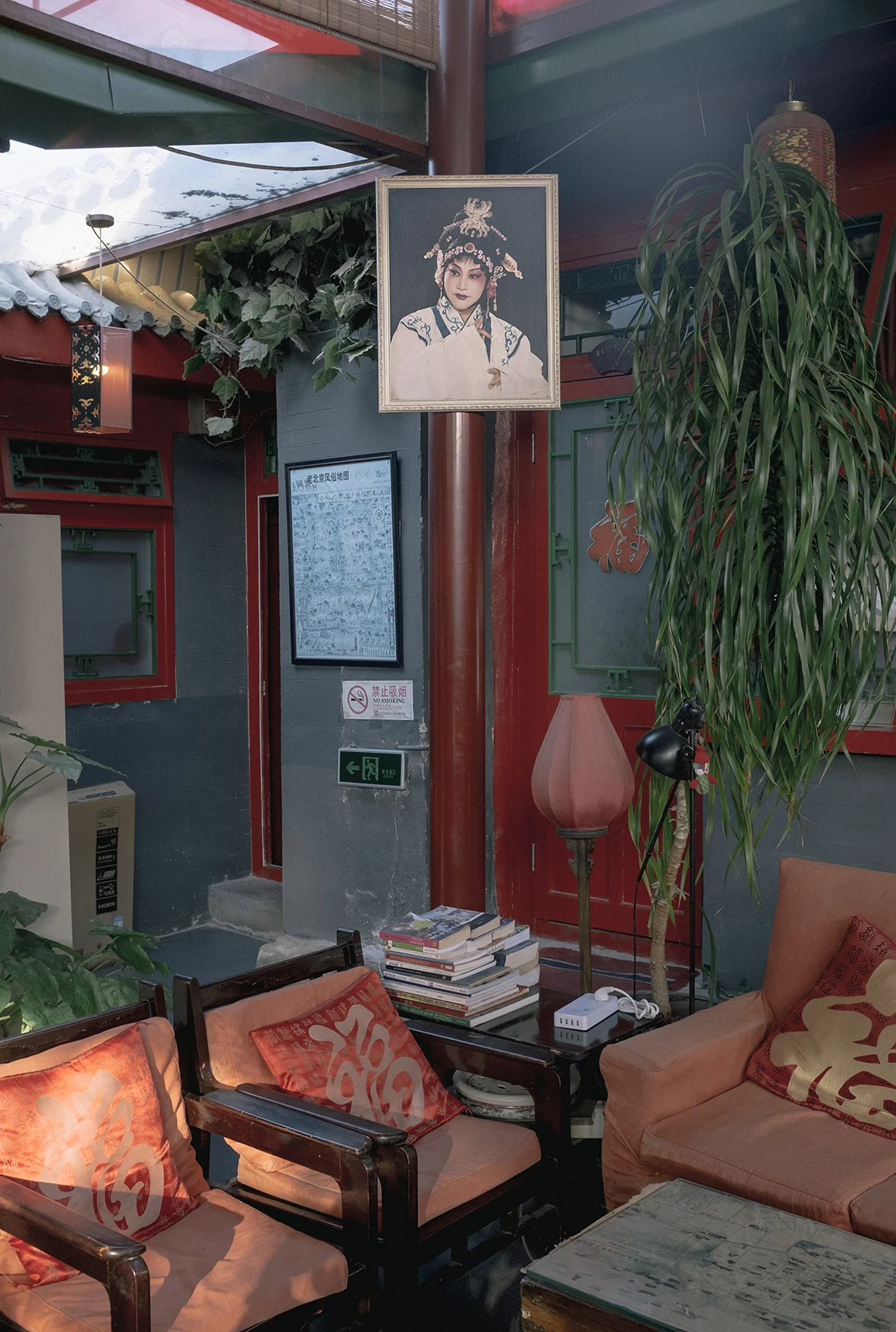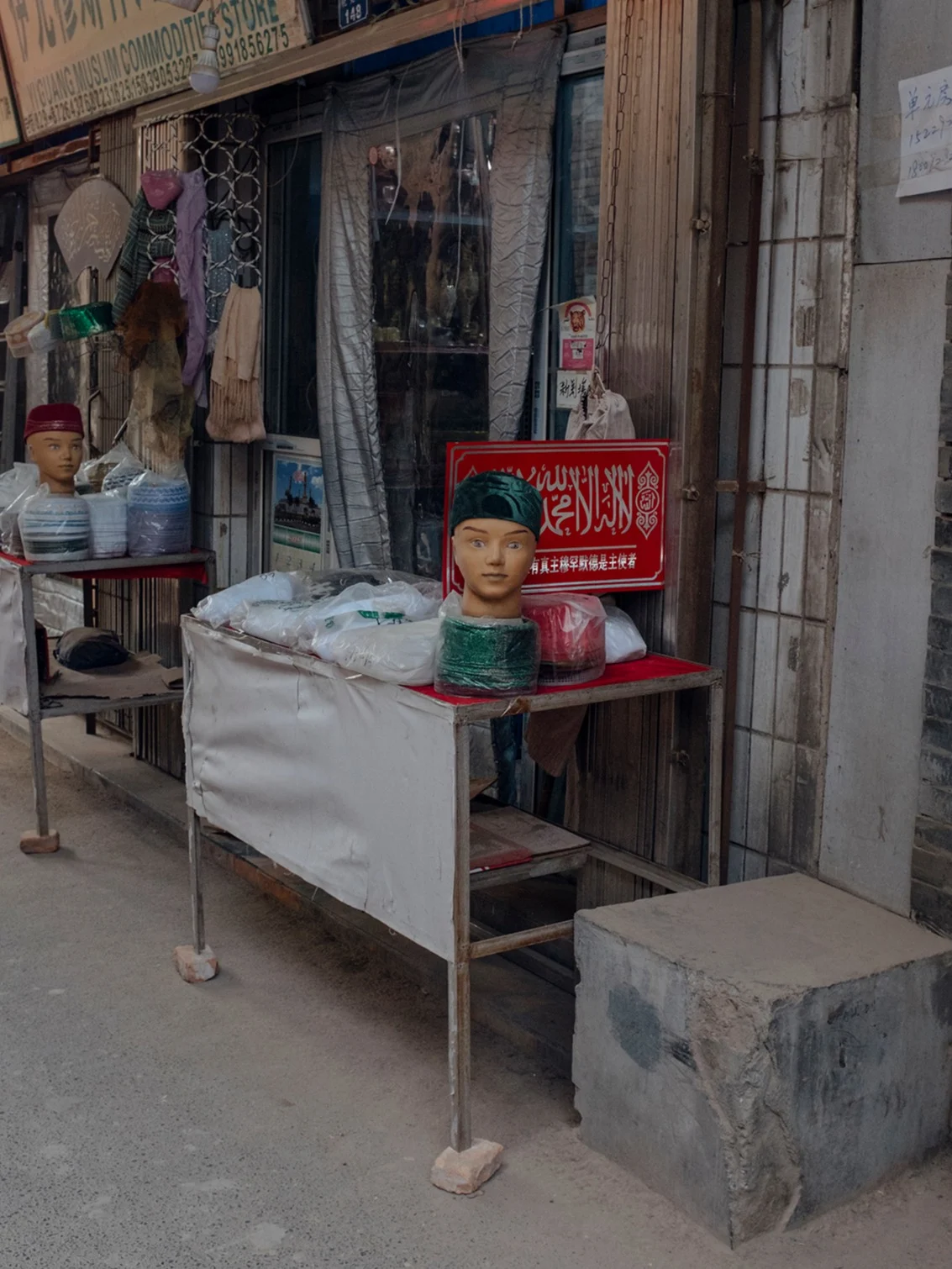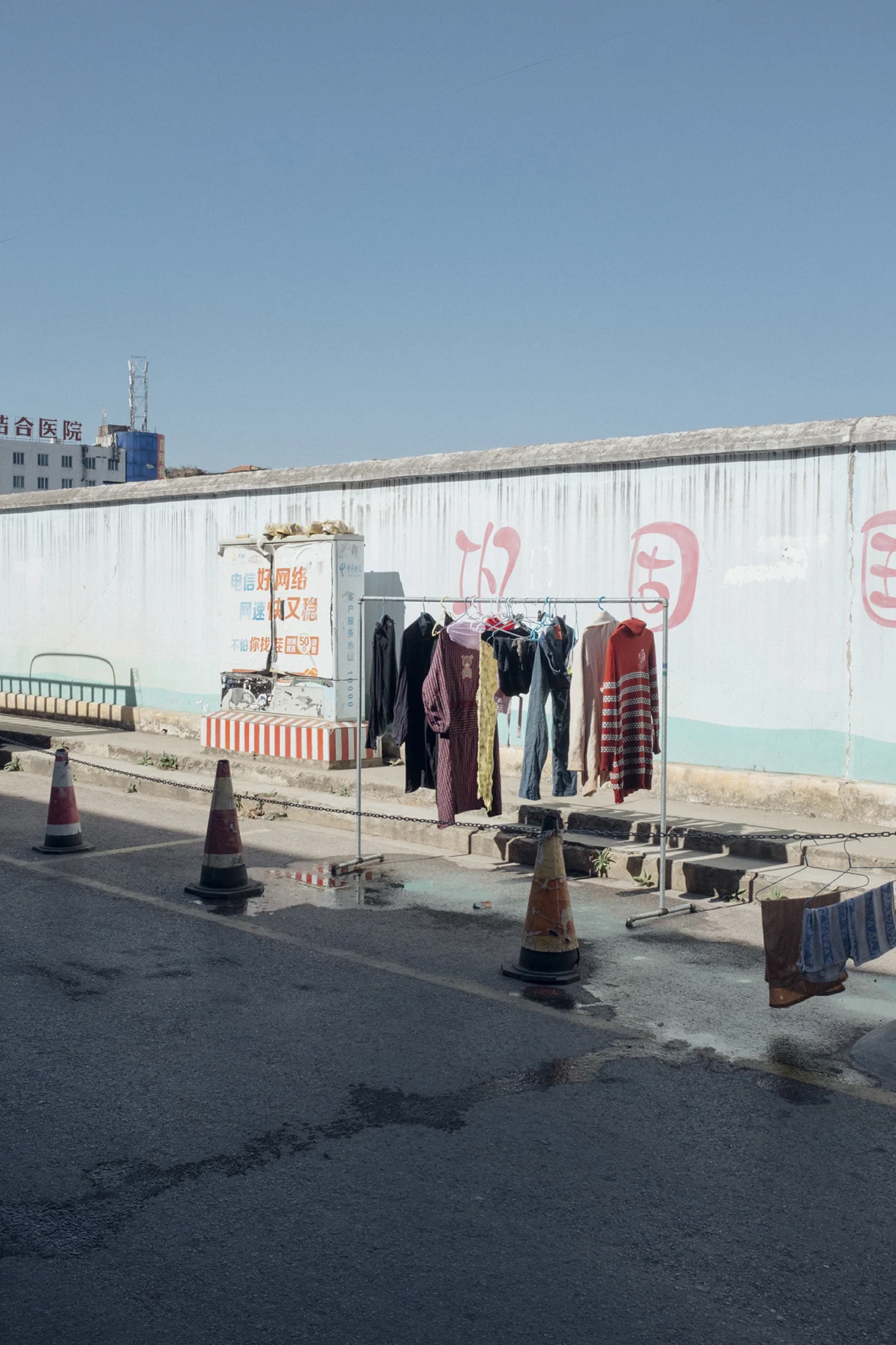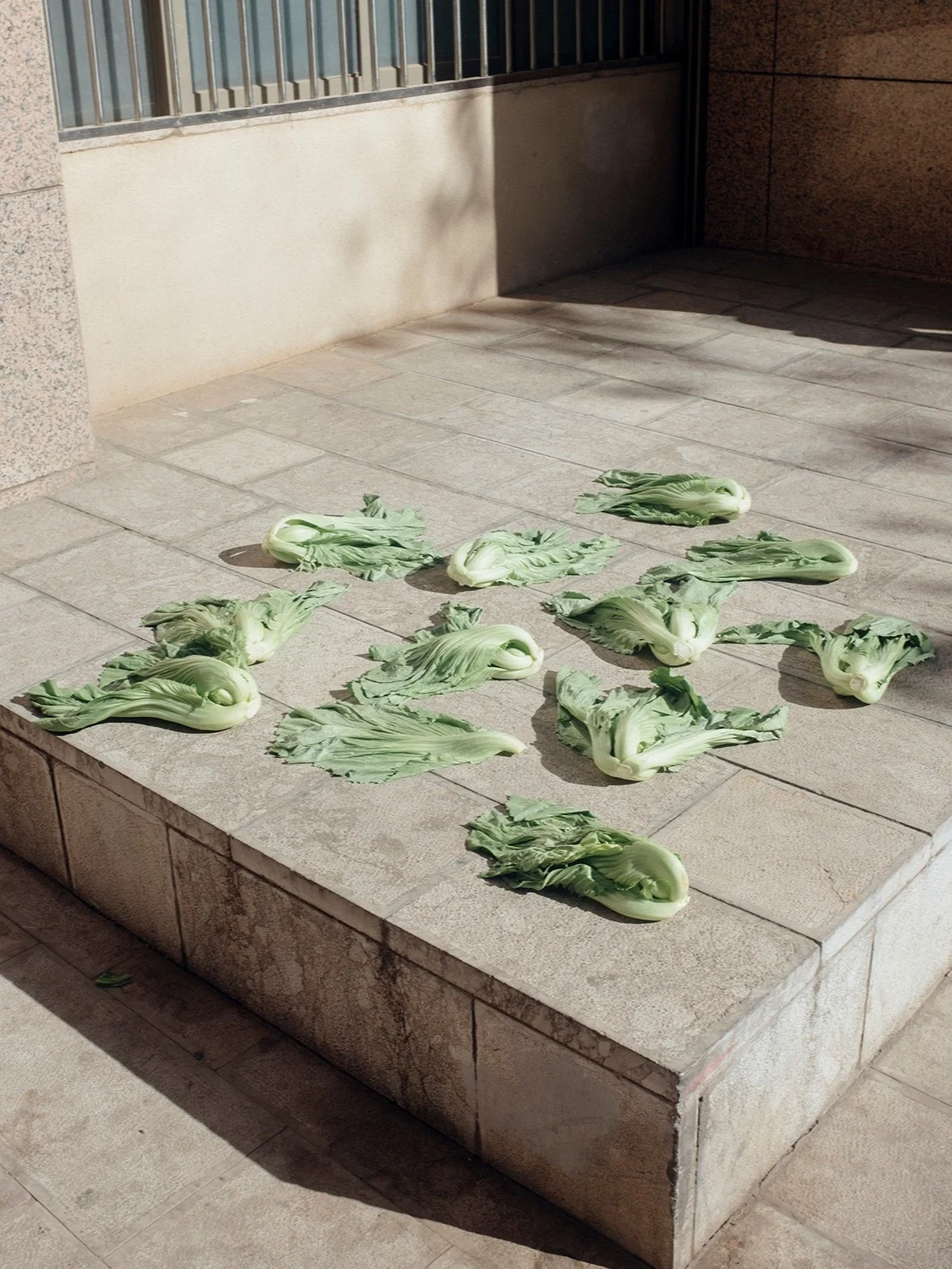
In late 2017, following a two-year recovery from a bad car accident, Saalik Khan spent six weeks in China making the project Red Dust: an at times eerily serene view of the nation, punctuated by double-take moments of near-tromp l’oeil perspective shifts and unreality. The series of events – some disastrous, others revelatory – that led him to make the photographs inform the work far more than any formalized sense of photographic voice. Khan is reticent about labeling himself a photographer, seeing the images as evidence of a personal journey and documents of an aesthetic reaction more than of a will to document or record in any formal sense. Writer Bruno Bayley speaks to Saalik about creative rebirth and the impact one book had upon taking a new path in his life.


In 2015 Saalik Khan was involved in a car accident that left his sciatic and peroneal nerves severed. He could not walk or use his left hand. Career and personal plans – including a burgeoning interest in photography – began to dissipate. His recuperation would take nearly two and a half years, Khan explains via a WhatsApp call from Pakistan, where he is currently living and working. “I had to explore other ways to make a living. I got into design, and I continued reading. I was getting into Marxist philosophy and communism, and I found a book by an author named Ma Jian…”
That book was British author Ma Jian’s 1999 novel Red Dust – a fictionalized account of the writer’s travels in 1980’s China. The book sees the focal character set out for Tibet, aspiring toward religious conversion and personal growth in the context of recent romantic and professional disappointment. His journey is hard, and while his original ideal of religious deliverance fails to materialize, he does come to understand what it is he wants in life. “At the end of the book, he realised that enlightenment was to be found not in a place, but within oneself,” Khan summarises.


Red Dust’s personal saga is set against a portrait of a country in transition, international trade increasing, and the incursions of modernity jutting up against centuries of tradition. “Ma Jian described in a very interesting way – before they opened up the economy,” says Khan. “He wrote about being strangled by his life circumstances: his wife had left him. My girlfriend of five years had also left me, after the accident. I’d had to move in with my parents because I couldn’t really take care of myself. There was a culmination of feeling for me: feeling extremely depressed and trapped.”
While the idea of taking a physical journey to test both his hard-earned mobility and personal resolve in the face of an alien language and landscape might have echoed some of the driving factors in Ma Jian’s own journey, Khan claims the trip was not conceived as a creative project, he had no interest in documenting a nation or its people.
Khan had become interested in photography while studying sociology, drawn in by its use as “an ethnographic tool.” But his route to the medium wasn’t without hurdles. In spite of being interested in art from an early age, years studying at a New York State madrasa, from 96-2001, curbed his creative output. “They beat the creativity out of us. It was forbidden to draw anything resembling a human figure… it was supposedly sinful. After I left that school I had kind of forgotten about my creative interests.” His subsequent time in a seminary school in Los Angeles seems to have laid concrete over his early inclinations toward art: “After seminary school, back in Los Angeles I had developed no clear idea of what I wanted to do or how I wanted to live. I rarely did anything but work odd jobs and spent the long and hollow days thinking and dreaming of a different life.”
Visiting a friend in Berkeley, California would rekindle a latent enthusiasm for art and, specifically, photography. “It was there that I realized there existed a place where people engaged with the world of ideas that I too desired to be a part of.” Enthused, Khan relocated to the college town in the summer of 2007. “In Berkeley I found myself in a different world. I found new friendships, and interacted with more people, it was in their presence where I began to take note of my own personal and intellectual deficiencies. Uneasy and unsatisfied with myself I began to spend more and more time outside, either at the library or outside with my camera. Photography allowed me to engage with the environment and people around me; it allowed me to gradually make sense of the curiosity I had begun to develop about the world.” Photography also offered Khan an opportunity to become involved with teaching at California’s San Quentin Prison, through the Prison University Program, and his attraction to the restorative and therapeutic nature of image-making grew.




This interest in photography withered after the accident. Khan did not take any photos for the duration of his long recovery, time he regrets not having used in which to record a “journey though a new relationship with his body.”
So, when asked about the motivations for his decision to journey to China shortly after he regained full mobility he is firm: “It was always personal. It was all for the journey.” Khan had, before the car wreck, taken annual trips with his best friend, Jahangir, who was in 2017 planning to take the Trans-Siberian express. This, in concert with his reading of Ma Jian was pivotal in Khan’s decision to depart. “Jahangir had been, and still is my best friend.” Khan writes in an email following our discussion. “He was very much responsible for forcing me to keep up with my physical therapy, seek counselling, and being there for me in many other ways.” Jahangir in turn – in a quote supplied by Khan – seems to regard the trip as being almost an ultimate step in that therapy: "I think Saalik's work captured the spirit of adventure from the trip. Many of his photos present a certain stillness or clam in the midst of an urban environment – solitude in a country of billions… We were meandering our way across the country, but covered tremendous ground overcoming our respective internal struggles. I was happy he was shooting photos again and could see the excitement and joy on his face. The trip was a seminal point in both our lives."
In his initial refusal to see the trip as a “project” there was also an aspect of intentional ring-fencing: a fear of formalising the joyous aspects of taking photographs. “I wanted it to be for this purely aesthetic relationship that I had with it. I remember reading a lot about artists and how when they commodify their relationship to their medium it would end up destroying .” Khan set out to conduct his own version of Ma Jian’s journey: a pilgrimage of resolve, a test of spirit and his physical recovery that would eventually cover about 2,800 miles.
On arriving, the creative hex in place since the accident seemingly broke. Khan found himself “taking picture, after picture, after picture.” He describes his approach to making photos as “purely emotionally aesthetic.” An interest in negative space, and a taste for quieter scenes direct his eye, but he stresses that really he was just capturing moments that presented themselves to him and suited his tastes. He was not seeking a narrative, or making images with an end point or publication in mind. “I wasn’t really interested in documenting anything wrote about or spoke about.”

There are other sub-currents in the work. As with Ma Jian’s Red Dust, Khan’s photos toy with the idea of the traditional coming face to face with modernity. There is the elusive figure – actually a Chinese hostel-mate of Khan’s – her face ever tilted down toward her phone as she walks through delicate ornamental gardens. There are also unalluring advertising hoardings promoting ancient mosques, clumsy-looking mannequins sporting traditional garments, antique-looking photo-ops backdropped by skyscrapers and decidedly modern urban haze. But Khan is insistently uncritical on this score, seemingly uninterested in more manicured historical sites on offer elsewhere.
While Khan insists the images are un-journalistic, there was – unsurprisingly for an avid reader of Marxist texts – a degree of interest in China as a “different political system.” “You can’t help but notice what the Chinese have done. I personally think it’s an amazing country. When I went to Xinjiang, the Muslim capital of China, Muslims were practicing out in the open, people were wearing hijabs... The call to prayer was being said on open speakers… It wasn’t what I had expected.” For Khan it was difficult not to contrast China with his home: “Coming from America, where things are in decay, it was a wake-up call. America is not all it makes itself out to be. We are the supposed champions of democracy but we really don’t look out for our own citizenry.” This fond feeling toward China is also evident in Khan’s gentle, reflective images of its people – even an image of scores of soldiers disembarking a train seems somehow closer in mood to an excitable school-trip than to the more familiar depictions of the People’s Liberation Army as ranks of stony-faced automatons.




Yet this interest in stillness, and visual quietness in images – whether intentionally or not – ties in to another facet of “red dust.” The term (a common one in China) describes the “dust that is flung up by cars as they are driven on dirt roads.” The term is, as Khan writes in a short text accompanying his images, “also used as a metaphor to describe the hustle and bustle of city life and the pursuit of fame and fortune.” The almost surreal calm, and the scale-warping emptiness of many of Khan’s photographs hint at an avoidance of that bustle and offer a visual counter to the weight of images of urban China that stress its frenetic crowds, traffic, and closeness. “Seeing beyond the red dust… would refer to a sort of detachment and rustic reclusion from the bustle of urban life,” explains Khan.
Even now, with Red Dust made and a new project about his relationship to a long-distant Pakistan underway, Khan is reticent about describing himself as a photographer. “I feel like these periods when I don’t take pictures my lack of seriousness about the medium. I should be experimenting, I should be engaging with photography. Maybe not on a daily basis, but maybe on a weekly basis.” There is almost a tone of guilt when Khan describes his fallow periods.
“Maybe I think too much about it. We live in an age where there are amazing photographers all around us, and you see amazing work on Instagram… it makes me ask myself questions. Why am I taking these pictures? If it’s really for myself, do I have to even take the picture? or can I just enjoy that moment for myself? These are questions I struggle with.”